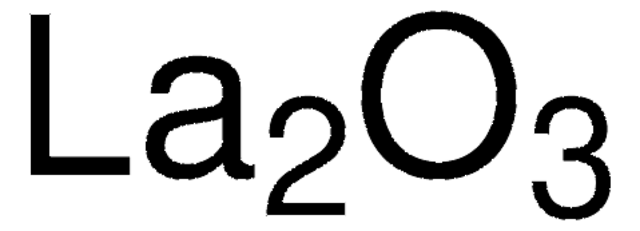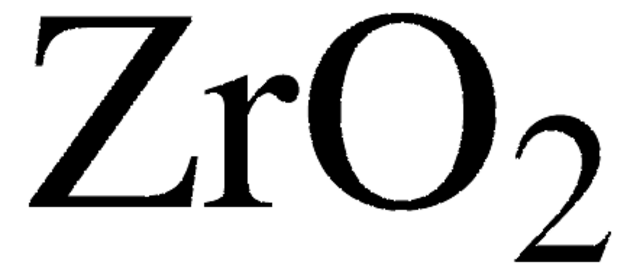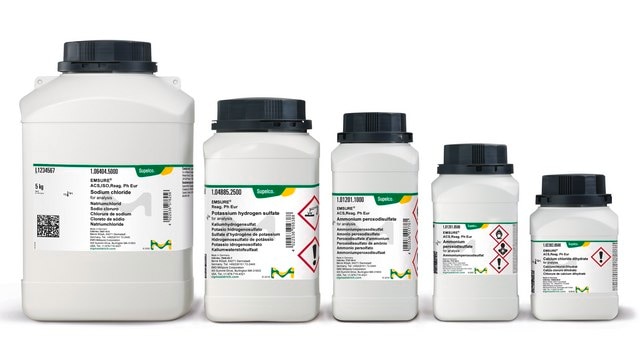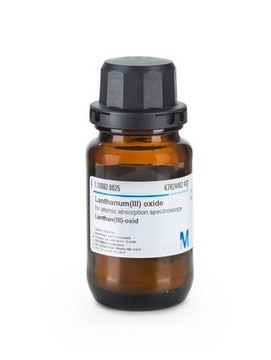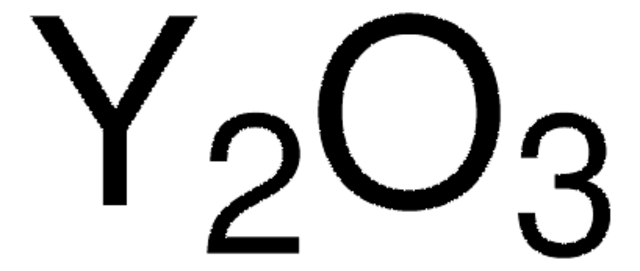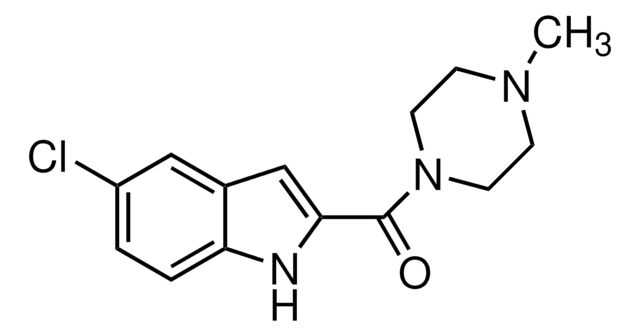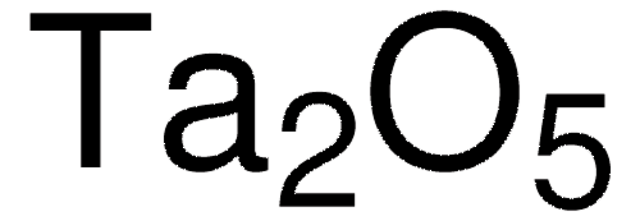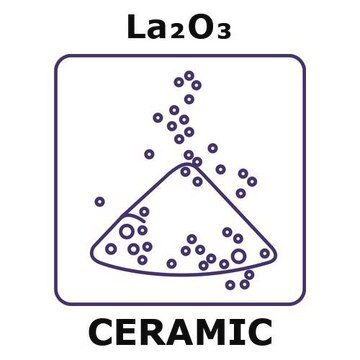L4000
Lanthanum(III) oxide
≥99.9%
Synonym(s):
Lanthana, Lanthanum sesquioxide, Lanthanum trioxide
About This Item
Recommended Products
Quality Level
assay
≥99.9%
form
powder
reaction suitability
reagent type: catalyst
core: lanthanum
density
6.51 g/mL at 25 °C (lit.)
application(s)
battery manufacturing
SMILES string
O=[La]O[La]=O
InChI
1S/2La.3O
InChI key
KTUFCUMIWABKDW-UHFFFAOYSA-N
Looking for similar products? Visit Product Comparison Guide
Related Categories
General description
Application
It can be used to prepare thermal-barrier coatings with a high thermal expansion coefficient and low thermal conductivity.
It can also be used as a recyclable catalytic system for the synthesis of diphenyl sulfides and selenides.
Features and Benefits
- High refractive index
- Thermal stability
- Hardness
- High dielectric constant
Storage Class
13 - Non Combustible Solids
wgk_germany
WGK 3
flash_point_f
Not applicable
flash_point_c
Not applicable
ppe
dust mask type N95 (US), Eyeshields, Gloves
Certificates of Analysis (COA)
Search for Certificates of Analysis (COA) by entering the products Lot/Batch Number. Lot and Batch Numbers can be found on a product’s label following the words ‘Lot’ or ‘Batch’.
Already Own This Product?
Find documentation for the products that you have recently purchased in the Document Library.
Customers Also Viewed
Articles
Innovation in dental restorative materials is driven by the need for biocompatible and natural-appearing restoration alternatives. Conventional dental materials like amalgam and composite resins have inherent disadvantages.
Rechargeable solid-state batteries are becoming increasingly important due to wide-spread use in computers, portable electronics, and vehicular applications.
Our team of scientists has experience in all areas of research including Life Science, Material Science, Chemical Synthesis, Chromatography, Analytical and many others.
Contact Technical Service